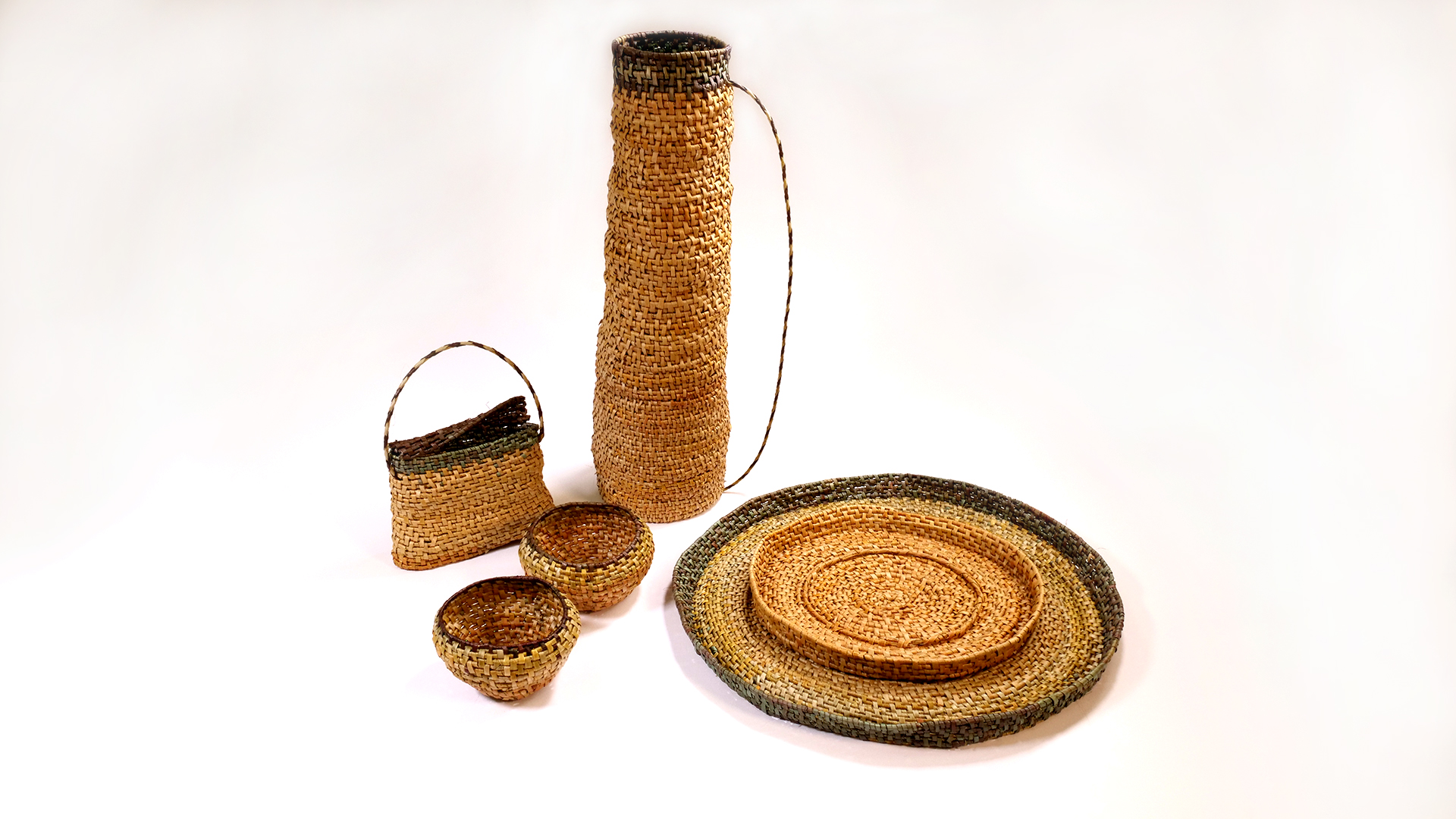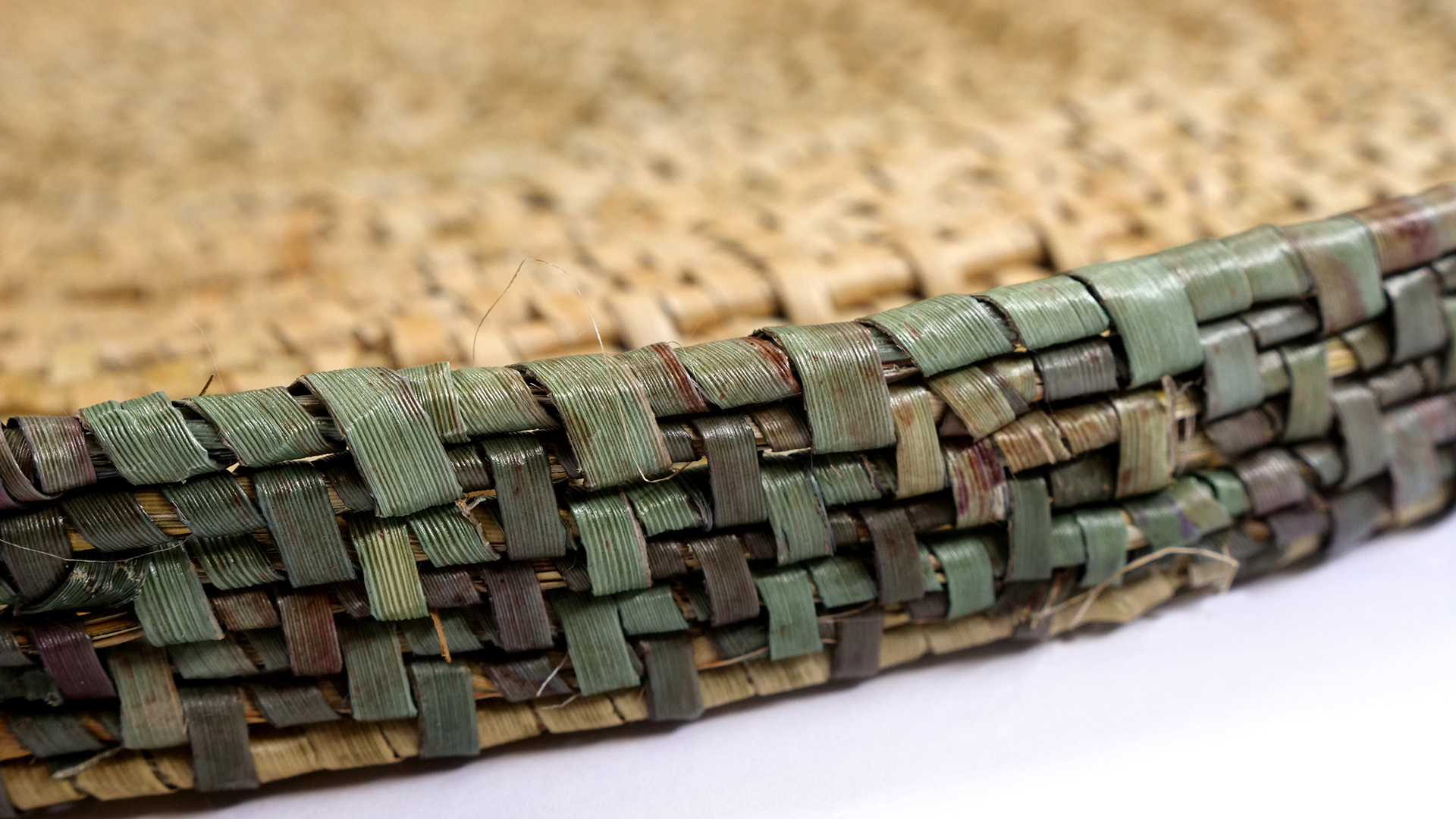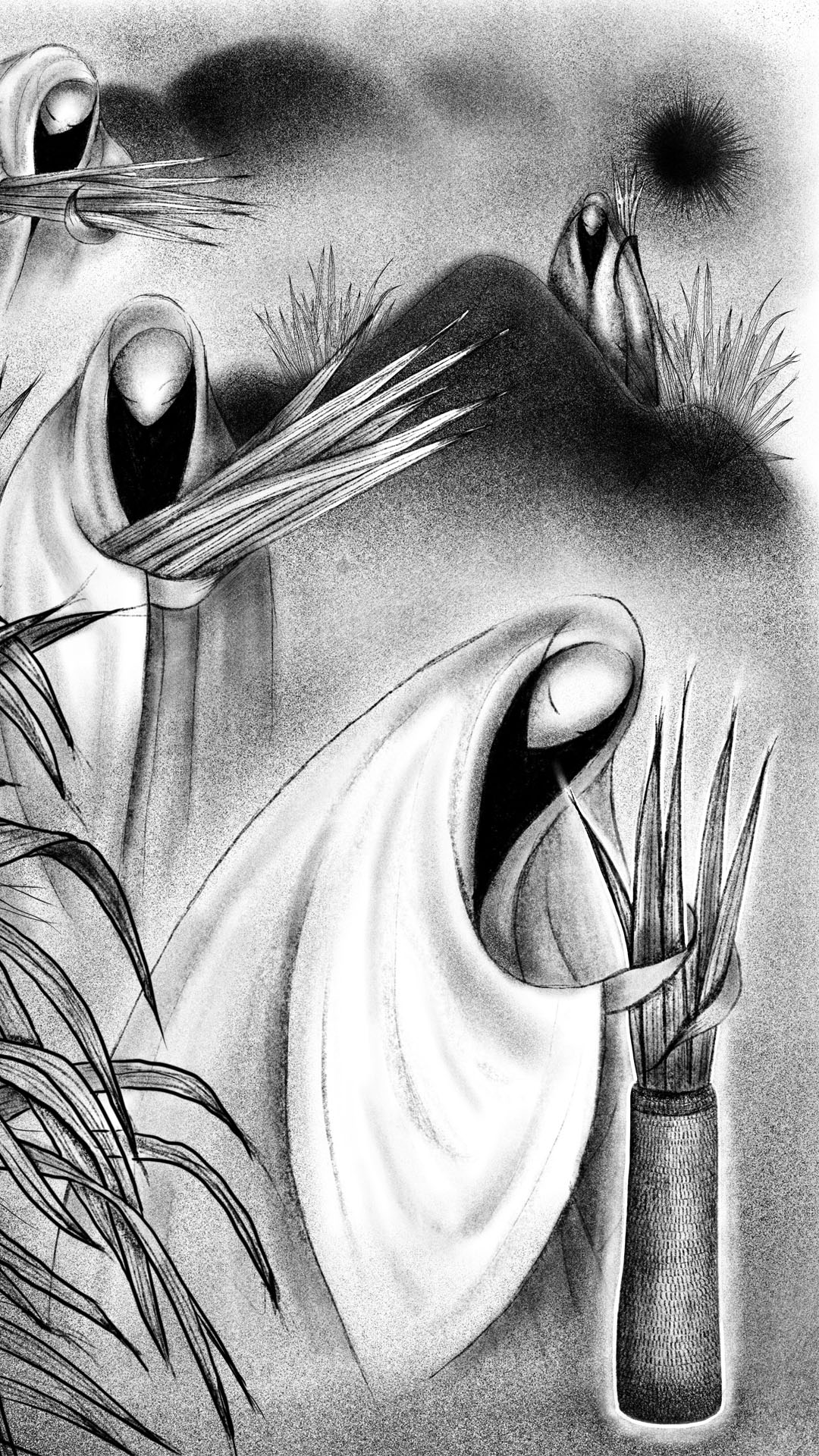
Nayesha Mulholland
Te Hokinga Mai
https://nayeshamulholland.wixsite.com/mysite

A Releasing of Identity Through Textiles.
Identity is like a shadow, intensified or diminished by the entering or extinguishing of light. It is in the foreground of our personhood while also running underground to the depths of our being. It can be expressed through, though not limited to, creative or functional outlets of life, shifting and evolving as time passes through us. Tension can be felt when identity is exposed and released into the material world, but creativity, imagination and artistic expression can help facilitate this tension into a productive harmony.
Basketry and weaving have a strong connection to the spiritual and natural world and is alike in many indigenous communities. There is uncompromisable respect for material and resource that channels through this artform. This project aims to express the confluence of mixed ethnicities and identities, Māori and Pākehā, and to create breath for weaving techniques and contemporary practices of printmaking that utilise tension to form a unique output of design.
This body of work represents a continuous journey of introspection and the evolution of identity through varied textile and design applications. It speaks on identity and what it means to make art in a traditional and contemporary sense without compromising oneself, it allows for pure expression without the self-consciousness of ‘choosing a side’. This essence transcends through to learning the Māori pragmatism of utility and function in design, at the same time releasing the spiritual element of wairua, which Pākehā may describe in terms of beauty, but in Māori is more accurately described as having mana, spiritual presence and influence. I continue to express this through objects that are woven through my own mana which influenced the very technique used to create them – a non-traditional practice in Māori weaving, a method that coils the leaves of harakeke.
The weaving ensures that tikanga is at the forefront of the practice and can exist as a gift to whānau and ancestral grounds, while the illustrations are a direct expression of this releasing of whakapapa through a western upbringing. It exists in its own space while being influenced by both Māori and Pākehā ancestries and flows together in confluence. This journey establishes confidence, not only in design but in navigating institutional learning, the learning of whakapapa and the ability to both respect and implement tikanga while innovating and creating art.



